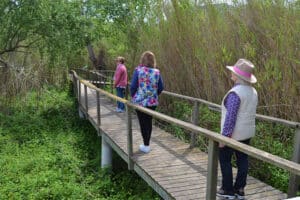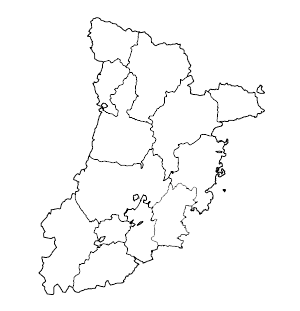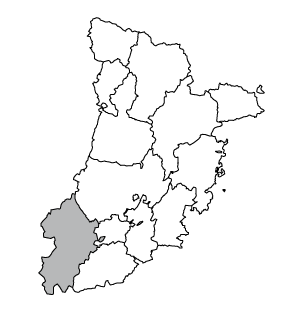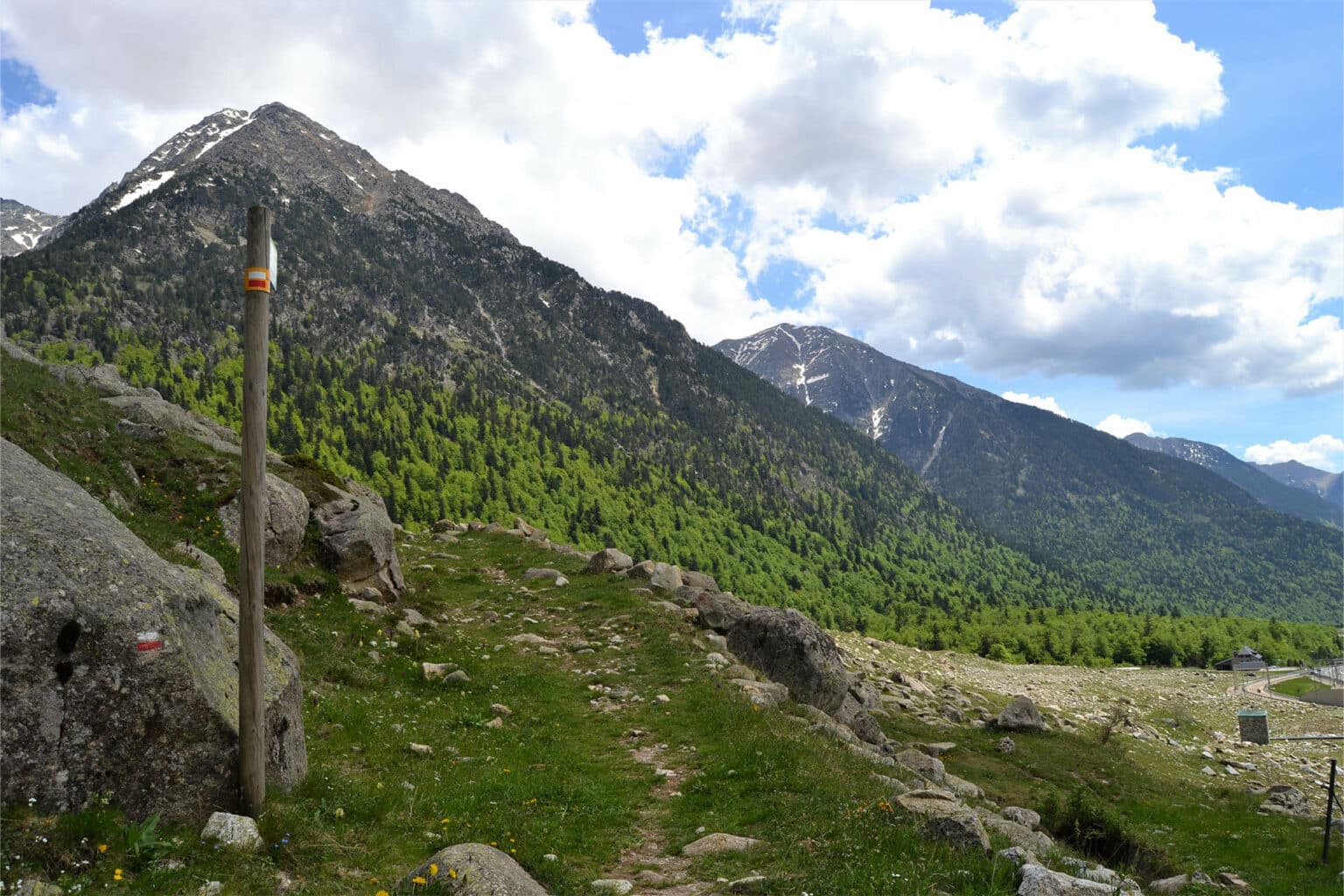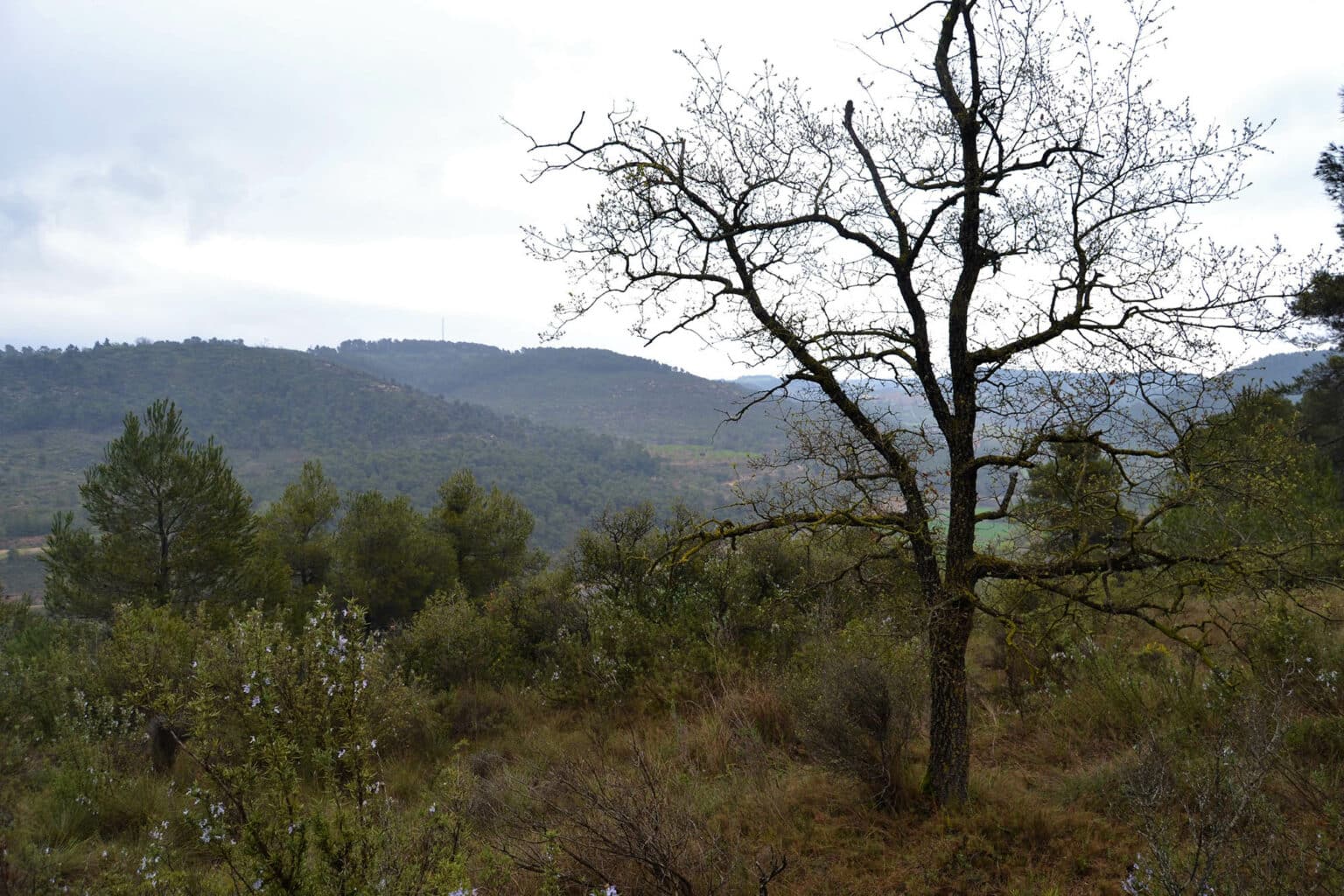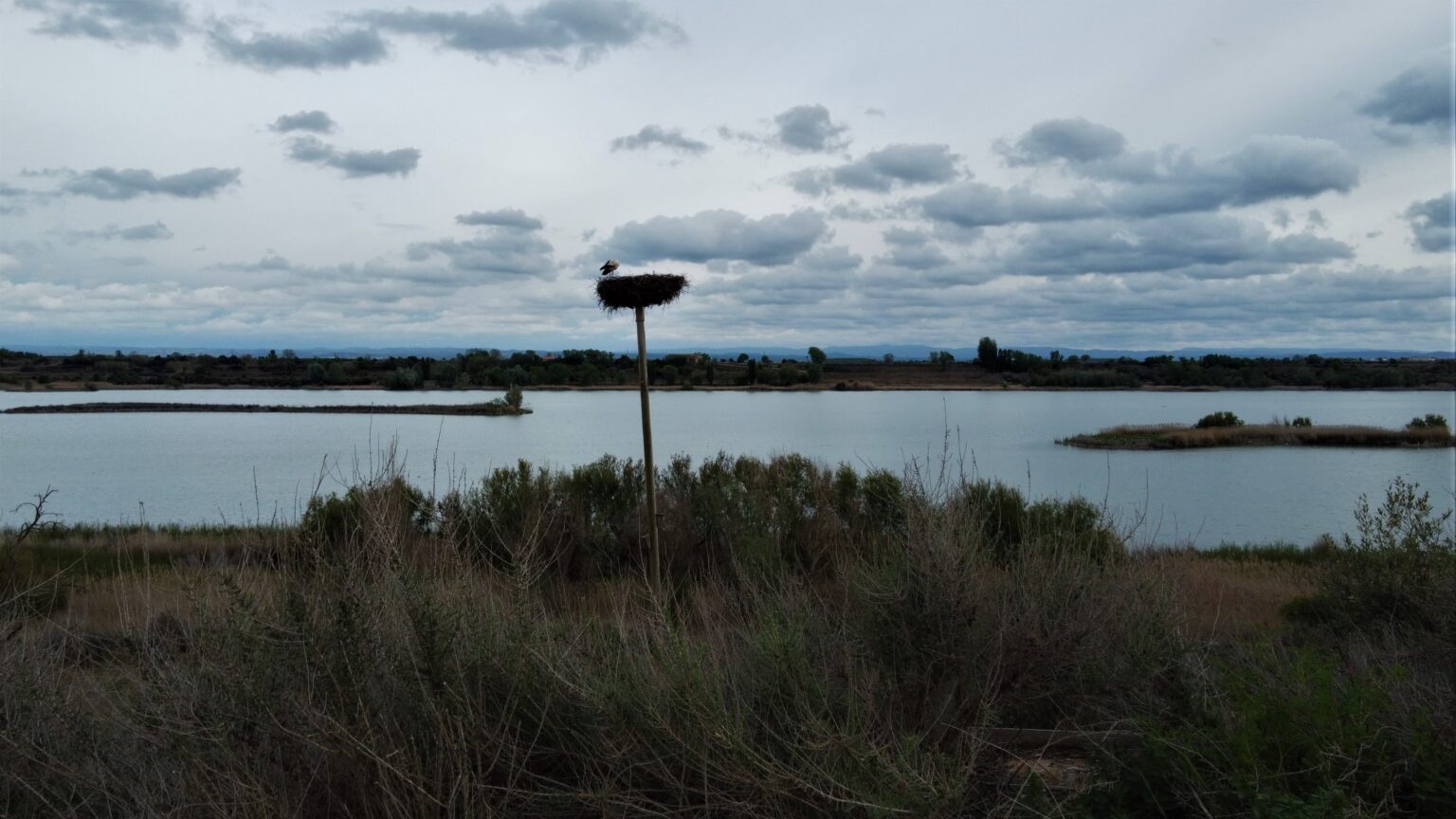FOREST BATHS

The generous landscape of the most forested walkway
The River Segre has left a deep mark on the character of El Segrià and, in the past, its rushing waters favoured the construction of canals and irrigation channels. The land along the river and the areas served by artificial irrigation are particularly dedicated to agricultural activity. This is especially true in the northern two-thirds of the comarca (local district), while the southern part has traditionally been devoted to dryland farming.
In the dryland area, the predominant crops are olives and almonds. These trees that are typical of areas with Mediterranean climates; they are drought tolerant and also resistant to intense cold. October and November are the ideal months for enjoying the olive landscapes and the well-known “camins de l’or líquid” (liquid-gold paths), which form part of an initiative to promote the culture of olive oil and the character of a territory marked by the olive tree. This thousand-year-old tree is full of symbolism and its branch is internationally known as a sign of peace. Almond trees normally flower between February and March. They have characteristically small, white flowers, which last for a couple of weeks, before the trees start to produce their fruit.
In the last few years, the fields of fruit trees of El Baix Segre have become an important tourist attraction, with considerable demand to see these trees flower and flood the landscape with blankets of colourful flowers. They have even given rise to an almond a bloom tourism, with visitors being attracted from considerable distances to contemplate the beauty of the flowers on these sweet fruit trees, which normally flower between the months of February and April. This new way of enjoying the beauty of the trees has become a very singular sensory experience and has also given renewed value to agricultural activity in the territory. Peaches, apricots and pears are the main protagonists when it comes to painting the landscape with a pallet of pinks, whites and greens, and offering a very special landscape. It is not at all strange to discover that more and more people wish to come and enjoy this colourful, visual and aromatic experience amongst fruit trees in full bloom!
In the south-west of the comarca it is relevant to highlight the Protected Natural Space of the Aiguabarreig (confluence) of the rivers Segre and Cinca. This area is covered by the Pla d’Espais d’Interès Natural (PEIN), or Plan for Spaces of Natural Interest, and enjoys special protection which ensures its conservation. This is the most important river confluence on the Iberian Peninsula and is where the waters of the rivers Segre, Ebro and Cinca come together. This location particularly stands out for its biological interest and is a paradise for those who love birds and nature. The rivers Cinca and Segre meet at a point between the municipal districts of Massalcoreig and La Granja d'Escarp, while only a few metres further on, these two rivers join the River Ebro, albeit just outside the limits of the protected natural space. This is also an attraction for those who enjoy fishing. This is a sport with a long tradition in this area and it is frequent to find people here who are trying to catch the highly prized catfish
La Granja d’Escarp is on the left-hand bank of the River Segre, at an altitude of just 78 metres. It stands on one of the meanders of the river and is on the border between Catalonia and the local district of El Baix Cinca, in Aragon. Much of the municipal district is cultivated under irrigation thanks to water from the River Segre. Fruit trees, such as peach and pear, abound here, and there has also been a recent increase in the cultivation of olives and almonds. In this municipality, there have been proposals to create an area for forest bathing at what is known as the “Passarel·la del Segre” (Segre walkway). You can get there via the LP-7041, via Seròs, and then continue along the A-2414, heading in the direction of Mequinenza. When you get to La Granja d’Escarp, it is necessary to take the track that turns off to the left and heads towards the river. You will then see a map which will show you where you are. There is also vertical signposting which indicates the location of a leisure area. It is possible to park here if you have arrived by motor vehicle, as there is an esplanade surrounded by lush vegetation.
You must then follow the signs to the Bosc de Sant Jaume. A walkway has been adapted for blind people and for those with functional diversity.
The space for forest bathing
The Bosc de Sant Jaume woodland is shaped by splendid riparian vegetation, characteristic of riversides and wetland areas, in which the fluvial environment has produced a space of great wealth thanks to the confluence of the waters of three very powerful rivers. The itinerary along the walkway consists of a walk of some 700 metres which allows visitors to enter the Protected Natural Space of the Confluence of the rivers Segre and Cinca. Throughout its trajectory, the route follows a level, wooden pathway which is apt for people with reduced mobility.
This is an extraordinary place to discover and calmly walk through as it is totally submerged in a forest with abundant riverside vegetation. The characteristics of this space turn the whole route into a magnificent soundscape thanks to the wealth of birdlife. As previously mentioned, this is a place frequently visited by ornithologists and also by fishermen; in fact, the fish are also important as important protagonists as well as birds at this location.
As the route begins, one of the most striking features is the dense vegetation of the reed beds, with numerous tall, slender stems which grow in muddy substrate for most of the year. This environment is practically inaccessible for humans, but offers numerous small islets of wildlife for many species. The reeds in the reedbed have ducts and air chambers in their stems and leaves which provide sufficient oxygen for them to live, even in flooded areas. Considering how they manage to survive thanks to their adaptive mechanism can make us more conscious of our own breathing and how we use oxygen, not only to breathe, but also to live. All along the walkway, there are small huts and hides for observing the fauna. They can also be used to do conscious breathing exercises and to connect with nature.
All along the route, it is possible to observe the abundant vegetation, which includes members of the willow family: willows (Salix L.) and polars (Populus nigra) and some weeping willows (Salix babylonica), which are not native to the area. Under the footbridge, it is also relevant to highlight a large number of wild blackberries (Rubus ulmifolius). Salicylic acid, which is present in the bark and leaves of willow, cures headaches and fevers and is currently commercialised as a famous derivative known as aspirin. In the cooler areas, there are also some tree species that are more typically found in the mountains. These include species such as the common alder (Alnus glutionsa), the ash (Fraxinus angustifolia) and the poplar (Populus alba). It is worth stopping to contemplate and remember that, since ancient times, we have used the vegetable kingdom to look after and heal ourselves. The numerous medicinal properties of plants and trees are fascinating, and not only those of the ones that we can consume, but also those that can do us good when we simply breathe in their fragrances. Nature is certainly generous.
The footbridge path can be completed, moving at quite a leisurely pace, in about a quarter of an hour, without stopping. However, it is well-worth stopping and complementing your walk with exercises that help you to connect with nature. At the end of the itinerary, there is an open space next to the river where it is possible to finish the activity, or you can go back along the path, and return to your starting point, and do it there.













